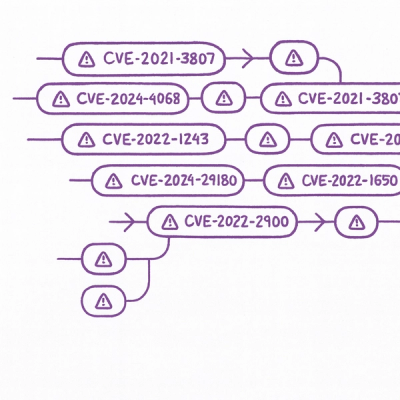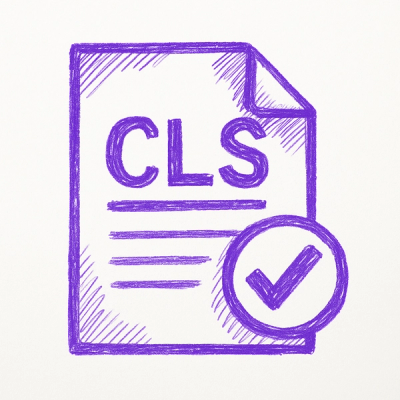
Security News
Astral Launches pyx: A Python-Native Package Registry
Astral unveils pyx, a Python-native package registry in beta, designed to speed installs, enhance security, and integrate deeply with uv.
= Bootstrap Pager
{}[http://badge.fury.io/rb/bootstrap_pager]
{
}[https://travis-ci.org/gemvein/bootstrap_pager]
{
 }[https://coveralls.io/r/gemvein/bootstrap_pager]
}[https://coveralls.io/r/gemvein/bootstrap_pager]
Bootstrap Pager is an updated version of the Kaminari pagination gem, which is a Scope & Engine based, clean, powerful, customizable and sophisticated paginator for modern web app frameworks and ORMs
== New Features added in Bootstrap Pager
== Features
=== Clean Does not globally pollute +Array+, +Hash+, +Object+ or AR::Base.
=== Easy to use Just bundle the gem, then your models are ready to be paginated. No configuration required. Don't have to define anything in your models or helpers.
=== Simple scope-based API Everything is method chainable with less "Hasheritis". You know, that's the Rails 3 way. No special collection class or anything for the paginated values, instead using a general AR::Relation instance. So, of course you can chain any other conditions before or after the paginator scope.
=== Customizable engine-based I18n-aware helper As the whole pagination helper is basically just a collection of links and non-links, Bootstrap Pager renders each of them through its own partial template inside the Engine. So, you can easily modify their behaviour, style or whatever by overriding partial templates.
=== ORM & template engine agnostic Bootstrap Pager supports multiple ORMs (ActiveRecord, Mongoid, MongoMapper) multiple web frameworks (Rails, Sinatra), and multiple template engines (ERB, Haml).
=== Modern The pagination helper outputs the HTML5
tag by default. Plus, the helper supports Rails 3 unobtrusive Ajax.=== Engine Namespace
By passing in the :engine_namespace option, you can get the pager to use a different helper for your paths.
== Supported versions
Ruby 1.8.7, 1.9.2, 1.9.3, 2.0.0, 2.1 (trunk)
Rails 3.0.x, 3.1, 3.2, 4.0, 4.1 (edge)
Haml 3+
Mongoid 2+
MongoMapper 0.9+
DataMapper 1.1.0+
Bootstrap 3
CSS 3
HTML 5
== Install
Put this line in your Gemfile: gem 'bootstrap_pager'
Then bundle install: % bundle install
== Usage
=== Query Basics
the +page+ scope
To fetch the 7th page of users (default +per_page+ is 25) User.page(7)
the +per+ scope
To show a lot more users per each page (change the +per_page+ value) User.page(7).per(50) Note that the +per+ scope is not directly defined on the models but is just a method defined on the page scope. This is absolutely reasonable because you will never actually use +per_page+ without specifying the +page+ number.
Keep in mind that +per+ utilizes internally +limit+ and so it will override any +limit+ that was set previously User.count # => 1000 a = User.limit(5).count # => 5 b = a.page(1).per(20).size # => 20
the +padding+ scope
Occasionally you need to pad a number of records that is not a multiple of the page size. User.page(7).per(50).padding(3) Note that the +padding+ scope also is not directly defined on the models.
=== General configuration options
You can configure the following default values by overriding these values using BootstrapPager.configure method. default_per_page # 25 by default max_per_page # nil by default window # 4 by default outer_window # 0 by default left # 0 by default right # 0 by default page_method_name # :page by default param_name # :page by default
There's a handy generator that generates the default configuration file into config/initializers directory. Run the following generator command, then edit the generated file. % rails g bootstrap_pager:config
changing +page_method_name+
You can change the method name +page+ to +bonzo+ or +plant+ or whatever you like, in order to play nice with existing +page+ method or association or scope or any other plugin that defines +page+ method on your models.
=== Configuring default +per_page+ value for each model
+paginates_per+
You can specify default +per_page+ value per each model using the following declarative DSL. class User < ActiveRecord::Base paginates_per 50 end
=== Configuring max +per_page+ value for each model
+max_paginates_per+
You can specify max +per_page+ value per each model using the following declarative DSL. If the variable that specified via +per+ scope is more than this variable, +max_paginates_per+ is used instead of it. Default value is nil, which means you are not imposing any max +per_page+ value. class User < ActiveRecord::Base max_paginates_per 100 end
=== Controllers
the page parameter is in params[:page]
Typically, your controller code will look like this: @users = User.order(:name).page params[:page]
=== Views
the same old helper method
Just call the +paginate+ helper: <%= paginate @users %>
This will render several ?page=N pagination links surrounded by an HTML5 <+nav+> tag.
=== Helpers
the +paginate+ helper method
<%= paginate @users %> This would output several pagination links such as « First ‹ Prev ... 2 3 4 5 6 7 8 9 10 ... Next › Last »
specifying the "inner window" size (4 by default)
<%= paginate @users, :window => 2 %> This would output something like ... 5 6 7 8 9 ... when 7 is the current page.
specifying the "outer window" size (0 by default)
<%= paginate @users, :outer_window => 3 %> This would output something like 1 2 3 4 ...(snip)... 17 18 19 20 while having 20 pages in total.
outer window can be separately specified by +left+, +right+ (0 by default)
<%= paginate @users, :left => 1, :right => 3 %> This would output something like 1 ...(snip)... 18 19 20 while having 20 pages in total.
changing the parameter name (:+param_name+) for the links
<%= paginate @users, :param_name => :pagina %> This would modify the query parameter name on each links.
extra parameters (:+params+) for the links
<%= paginate @users, :params => {:controller => 'foo', :action => 'bar'} %> This would modify each link's +url_option+. :+controller+ and :+action+ might be the keys in common.
Ajax links (crazy simple, but works perfectly!)
<%= paginate @users, :remote => true %> This would add data-remote="true" to all the links inside.
the +link_to_next_page+ and +link_to_previous_page+ helper method
<%= link_to_next_page @items, 'Next Page' %> This simply renders a link to the next page. This would be helpful for creating a Twitter-like pagination feature.
the +page_entries_info+ helper method
<%= page_entries_info @users %> This renders a helpful message with numbers of displayed vs. total entries.
=== I18n and labels
The default labels for 'first', 'last', 'previous', '...' and 'next' are stored in the I18n yaml inside the engine, and rendered through I18n API. You can switch the label value per I18n.locale for your internationalized application. Keys and the default values are the following. You can override them by adding to a YAML file in your Rails.root/config/locales directory.
en: views: pagination: first: "« First" last: "Last »" previous: "‹ Prev" next: "Next ›" truncate: "..."
=== Customizing the pagination helper
BootstrapPager includes a handy template generator.
to edit your paginator
Run the generator first, % rails g bootstrap_pager:views default
then edit the partials in your app's app/views/bootstrap_pager/ directory.
for Haml users
Haml templates generator is also available by adding the -e haml option (this is automatically invoked when the default template_engine is set to Haml).
% rails g bootstrap_pager:views default -e haml
themes
The generator has the ability to fetch several sample template themes from the external repository (https://github.com/amatsuda/bootstrap_pager_themes) in addition to the bundled "default" one, which will help you creating a nice looking paginator. % rails g bootstrap_pager:views THEME
To see the full list of avaliable themes, take a look at the themes repository, or just hit the generator without specifying +THEME+ argument. % rails g bootstrap_pager:views
multiple themes
To utilize multiple themes from within a single application, create a directory within the app/views/bootstrap_pager/ and move your custom template files into that directory. % rails g bootstrap_pager:views default (skip if you have existing bootstrap_pager views) % cd app/views/bootstrap_pager % mkdir my_custom_theme % cp _.html. my_custom_theme/
Next, reference that directory when calling the +paginate+ method:
<%= paginate @users, :theme => 'my_custom_theme' %>
Customize away!
Note: if the theme isn't present or none is specified, bootstrap_pager will default back to the views included within the gem.
=== Paginating a generic Array object
BootstrapPager provides an Array wrapper class that adapts a generic Array object to the paginate view helper. However, the paginate helper doesn't automatically handle your Array object (this is intentional and by design). BootstrapPager::paginate_array method converts your Array object into a paginatable Array that accepts page method. BootstrapPager.paginate_array(my_array_object).page(params[:page]).per(10)
You can specify the +total_count+ value through options Hash. This would be helpful when handling an Array-ish object that has a different +count+ value from actual +count+ such as RSolr search result or when you need to generate a custom pagination. For example: BootstrapPager.paginate_array([], total_count: 145).page(params[:page]).per(10)
== Creating friendly URLs and caching
Because of the +page+ parameter and Rails 3 routing, you can easily generate SEO and user-friendly URLs. For any resource you'd like to paginate, just add the following to your +routes.rb+:
resources :my_resources do
get 'page/:page', :action => :index, :on => :collection
end
This will create URLs like /my_resources/page/33 instead of /my_resources?page=33. This is now a friendly URL, but it also has other added benefits...
Because the +page+ parameter is now a URL segment, we can leverage on Rails page caching[http://guides.rubyonrails.org/caching_with_rails.html#page-caching]!
NOTE: In this example, I've pointed the route to my :index action. You may have defined a custom pagination action in your controller - you should point :action => :your_custom_action instead.
== Sinatra/Padrino support
Since version 0.13.0, bootstrap_pager started to support Sinatra or Sinatra-based frameworks experimentally.
To use bootstrap_pager and its helpers with these frameworks,
require 'bootstrap_pager/sinatra'
or edit gemfile:
gem 'bootstrap_pager', :require => 'bootstrap_pager/sinatra'
More features are coming, and again, this is still experimental. Please let us know if you found anything wrong with the Sinatra support.
== Infinite Scroll with Jquery
For infinite scroll technology, add jquery.infinitescroll to your application.js file.
//= require jquery.infinitescroll
//= require infinitescroll
Then, add class="infinitescroll" to the div containing your pagination call, and add the class "infinitescroll-item" to the items within that div that represent individual objects.
<div id="posts" class="infinitescroll">
<div id="post_5" class="infinitescroll-item">
... Post content here ...
</div>
... Many more posts here ...
<%= pagination @posts %>
</div>
== Contributors
== Copyright
Copyright (c) 2013 Sour Cherry Web. See MIT-LICENSE for further details.
FAQs
Unknown package
We found that bootstrap_pager demonstrated a not healthy version release cadence and project activity because the last version was released a year ago. It has 1 open source maintainer collaborating on the project.
Did you know?

Socket for GitHub automatically highlights issues in each pull request and monitors the health of all your open source dependencies. Discover the contents of your packages and block harmful activity before you install or update your dependencies.

Security News
Astral unveils pyx, a Python-native package registry in beta, designed to speed installs, enhance security, and integrate deeply with uv.

Security News
The Latio podcast explores how static and runtime reachability help teams prioritize exploitable vulnerabilities and streamline AppSec workflows.

Security News
The latest Opengrep releases add Apex scanning, precision rule tuning, and performance gains for open source static code analysis.